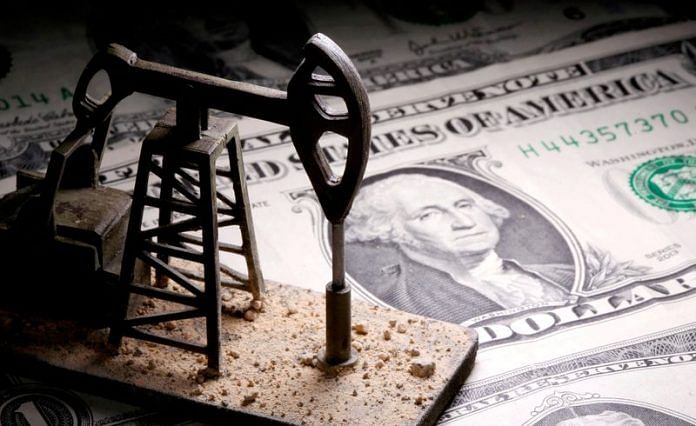By Stephanie Kelly and Trixie Yap
SINGAPORE (Reuters) -Oil prices rose on Tuesday on expectations that inventories in the U.S., the world’s biggest crude consumer, are expected to fall and on signs that demand in emerging markets remains healthy.
Crude futures likely received a boost from gains in Asian equity markets as regional central banks are expected to keep their interest rates steady.
Signs of strong fuel demand in India, the world’s third-biggest oil consumer, in March also supported prices. Last month, fuel consumption jumped by 5% from a year earlier to a record 4.83 million barrels per day. The country continues to be the main destination for Russian Urals crude amid the resorting of global oil trade flows in the wake of the invasion of Ukraine.
Brent crude rose 57 cents, or 0.68%, to $84.75 a barrel at 0425 GMT, while U.S. West Texas Intermediate gained 60 cents, or 0.75%, to $80.34.
Oil futures have climbed more than 5% since the Organization of the Petroleum Exporting Countries (OPEC) and allies including Russia surprised the market last week with a new round of production cuts starting in May.
On the U.S. supply front, industry data on U.S. crude stockpiles is due on Tuesday. Five analysts polled by Reuters estimated on average that crude inventories fell by about 1.3 million barrels in the week to April 7.
Oil prices fell on Monday after rising for three straight weeks, after U.S. jobs data pointed to a tight labor market, heightening expectations of another Federal Reserve rate hike that could curb oil demand.
Rate hike expectations boosted the U.S. dollar index on Monday and Tuesday, which weighed on oil prices as dollar strength makes oil more expensive for other currency holders.
Further, a U.S. inflation report to be released on Wednesday could help investors gauge the near-term trajectory for interest rates.
In Asia, data from China showed that consumer inflation data in March hit the slowest pace since September 2021 suggesting demand weakness persists amid an uneven economic recovery.
(Reporting by Stephanie Kelly and Trixie Yap; Editing by Sonali Paul and Christian Schmollinger)
Disclaimer: This report is auto generated from the Reuters news service. ThePrint holds no responsibilty for its content.



